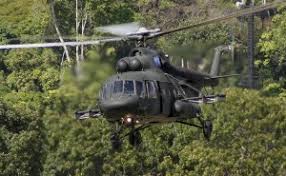The Ghana Air Force helicopter that crashed on August 6 had surpassed its 10-year operational lifespan at the time of the accident, according to the official report by the Aircraft Investigations Bureau (AIB) Ghana.
The aircraft, manufactured in 2012 and inducted into Ghana’s Air Force fleet in May 2015, reached its service threshold on 18 May 2025. However, investigators found that the aircraft had been granted a 90-day operational extension, valid until 18 August 2025, following manufacturer approval. The crash occurred just 12 days before the extension expired.
Cleared for Flight
“Aircraft have periodic checks to ensure fitness for service. The 10-year check was what was mandated for this helicopter,” said Flight Captain Paul Fordjour, Head of Investigations at the AIB Ghana.
“The manufacturer gave a 90-day extension to 18 August 2025, and the helicopter met all the basic safety requirements. That notwithstanding, a 100-hour check was also conducted before the flight,” he explained.
According to Capt. Fordjour, the helicopter was declared airworthy on the day of the mission and “duly signed off by both the engineer and the captain.” The Flight Data Recorder (FDR) analysis also confirmed the aircraft was in good condition mechanically, though “it lacked some avionic safety enhancements.”
Mission and Tragic End
The ill-fated aircraft, with tail number GHF 631, departed Accra at 9:12 a.m. en route to Obuasi in the Ashanti Region on an anti-illegal mining operation when it lost radar contact and crashed in the Adansi Akrofuom District.
All eight passengers and crew members on board perished in the crash.
The victims included:
- Dr. Edward Omane Boamah, Minister for Defence
- Ibrahim Murtala Muhammed, Minister for Environment, Science and Technology
- Muniru Mohammed Limuna, Acting Deputy National Security Coordinator
- Samuel Sarpong, NDC Vice-Chair
- Samuel Aboagye, former parliamentary candidate
- Sqn. Leader Peter Bafemi Anala
- Flying Officer Manaen Twum Ampadu
- Sgt. Ernest Addo Mensah
The tragedy marked one of Ghana’s deadliest military aviation disasters in recent history.
The investigative committee, chaired by National Security Coordinator Abdul-Osman Razak, worked in collaboration with the Ghana Air Force, the Ghana Civil Aviation Authority (GCAA), and international aviation experts.
While confirming that the helicopter was within its approved extension period and had passed all required maintenance checks, the committee noted that it was operating at the edge of its service life and lacked modern avionic safety upgrades — factors that may have contributed to the incident.
The report further recommended:
- Accelerated fleet modernization for the Ghana Air Force
- Regular independent airworthiness reviews for military aircraft beyond 8 years of service
- Integration of updated avionics and safety enhancement systems
- Enhanced training for technical and flight crews on end-of-life aircraft operations
The crash reignites debate over Ghana’s aging military air fleet. Several of the country’s helicopters, purchased between 2009 and 2015, are nearing the end of their manufacturer-recommended lifespans.
In 2012, a similar Air Force crash near Tema claimed the lives of three crew members, prompting calls for stricter aircraft maintenance protocols. Despite those warnings, fleet renewal has remained slow due to budget constraints and procurement delays.
The AIB’s findings are expected to inform new safety regulations and acquisition policies within the Ghana Armed Forces. A White Paper is currently being prepared by the Ministry of Defence to implement the committee’s recommendations.
Officials say the goal is to prevent future tragedies and ensure that “no military personnel or public servant loses their life to an avoidable technical failure.”




